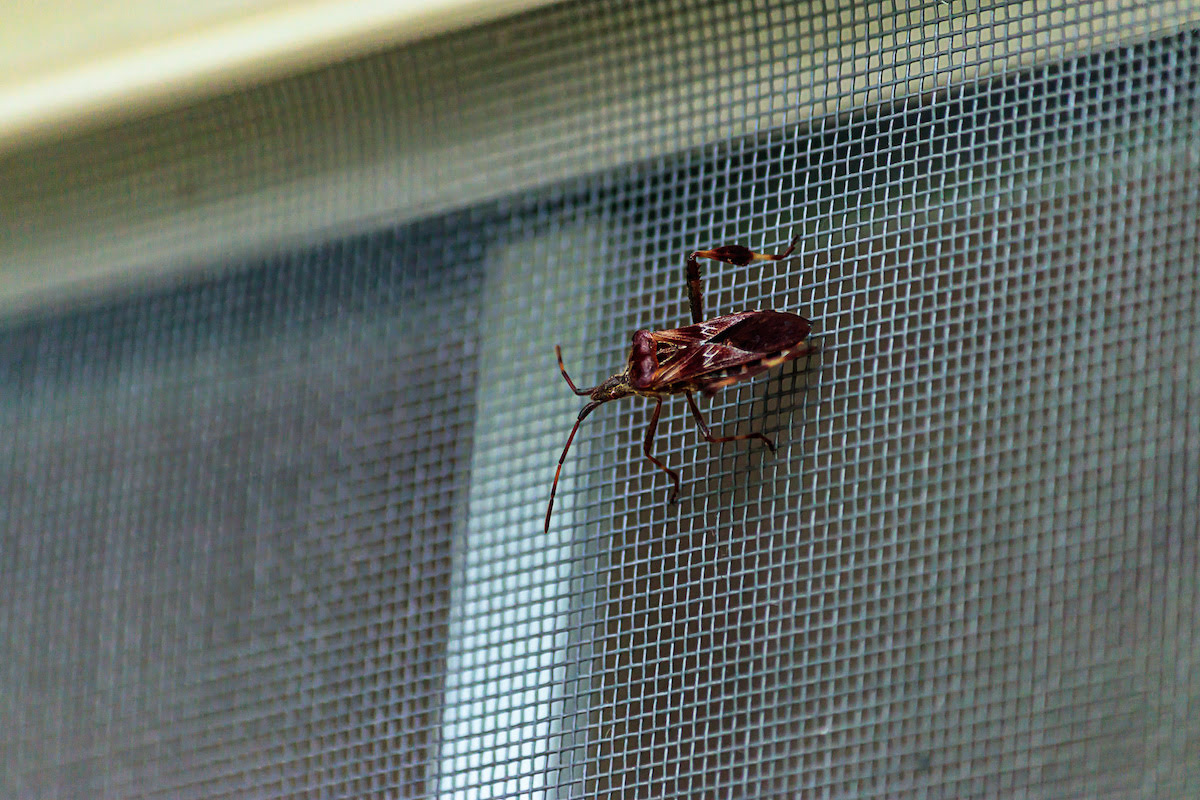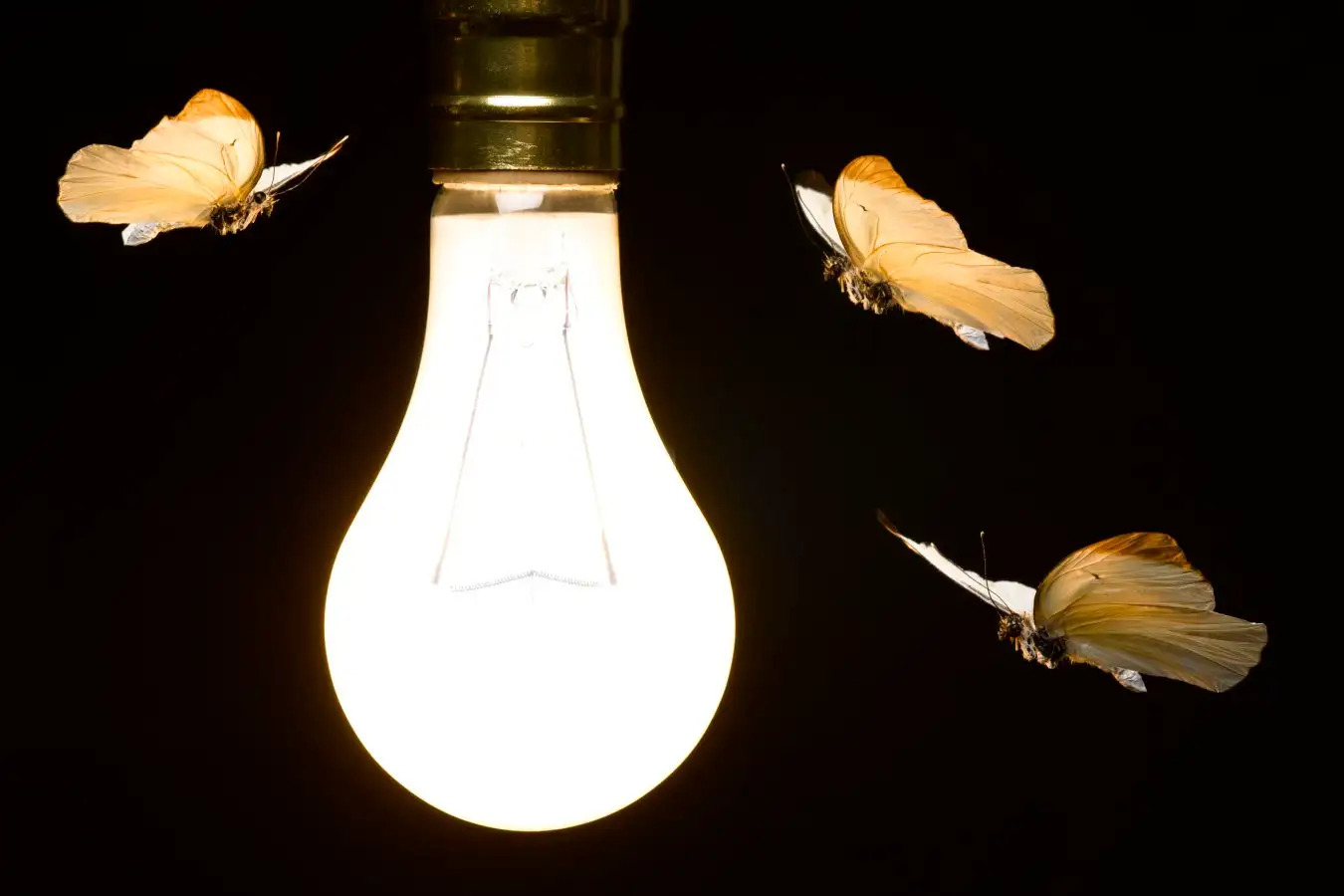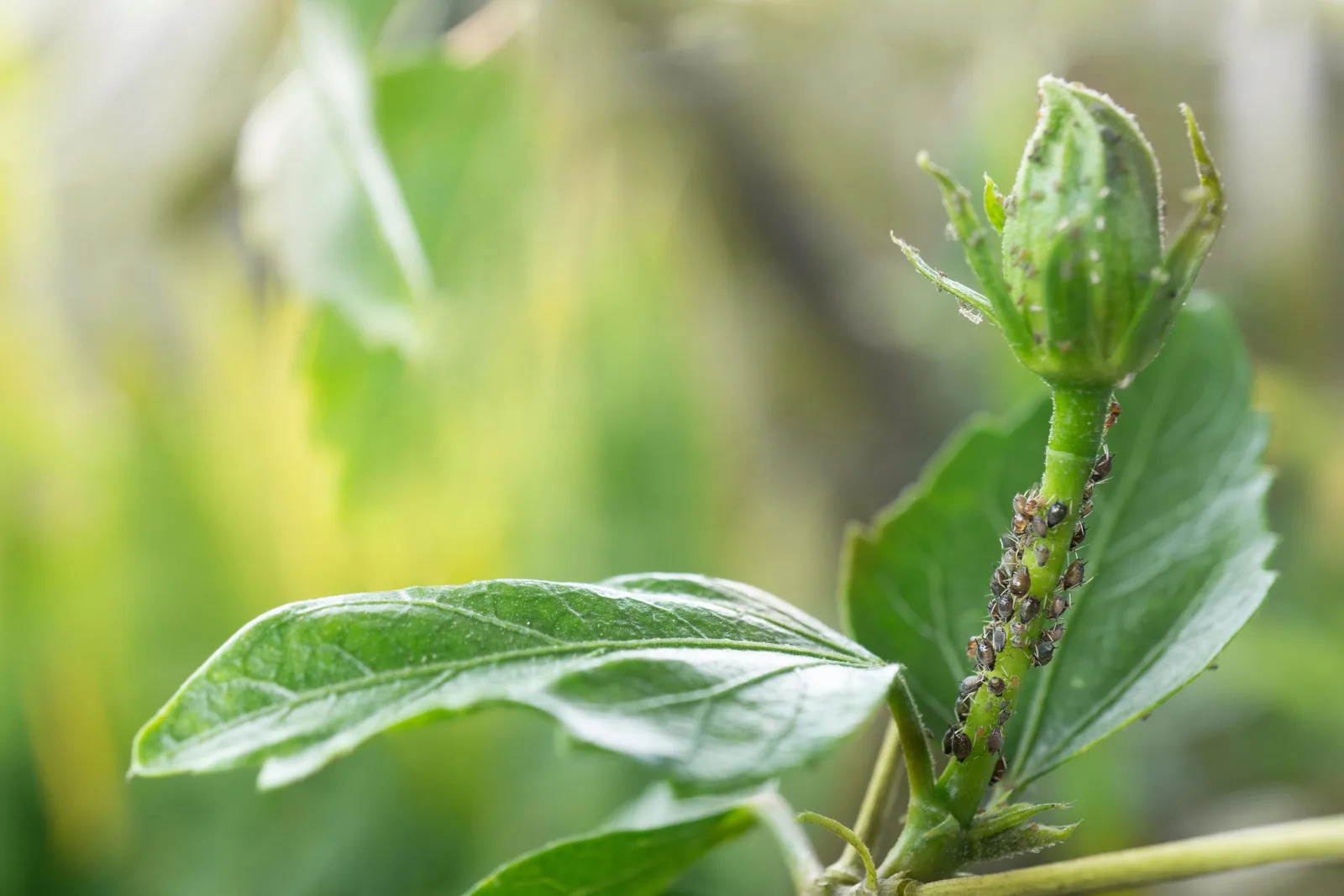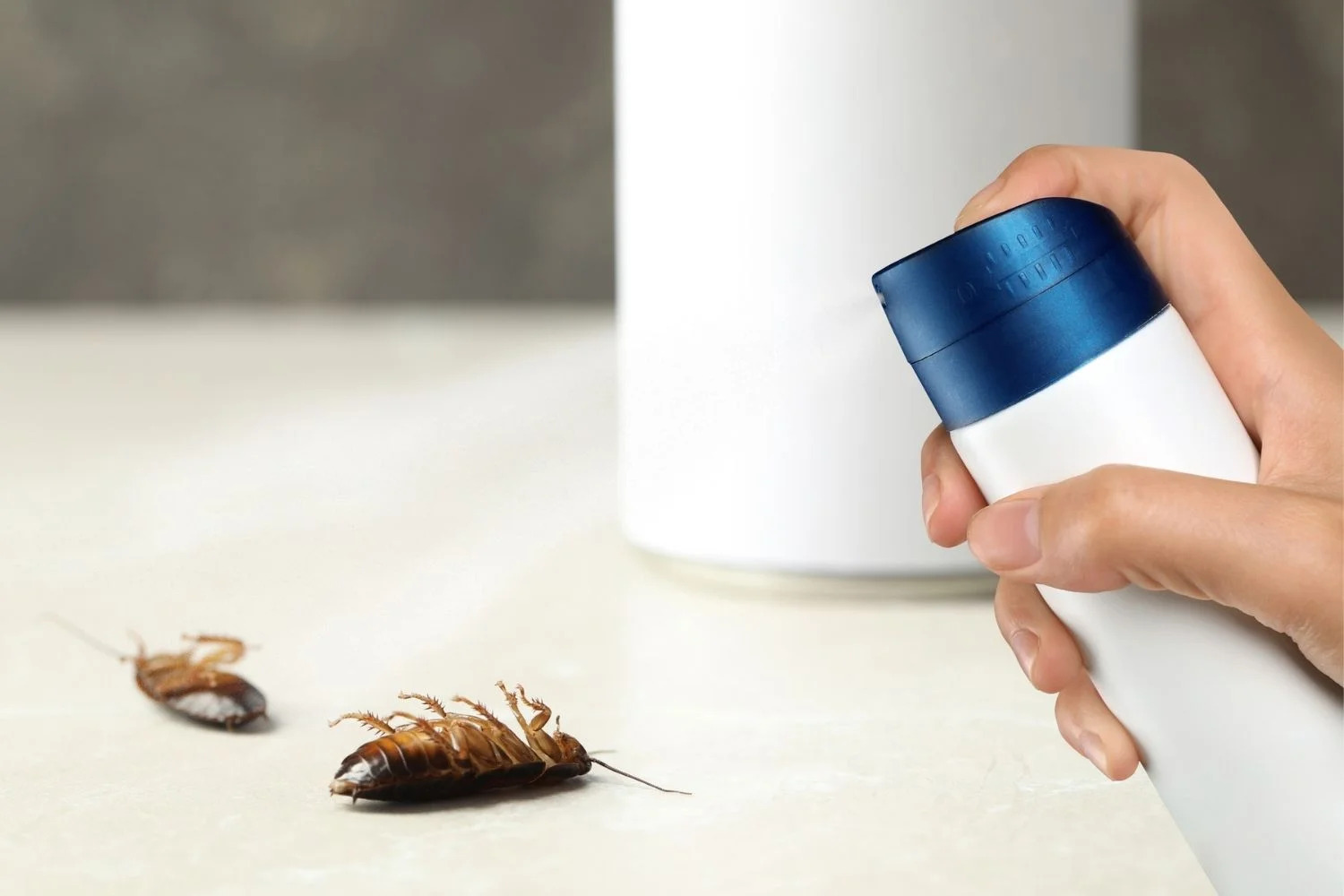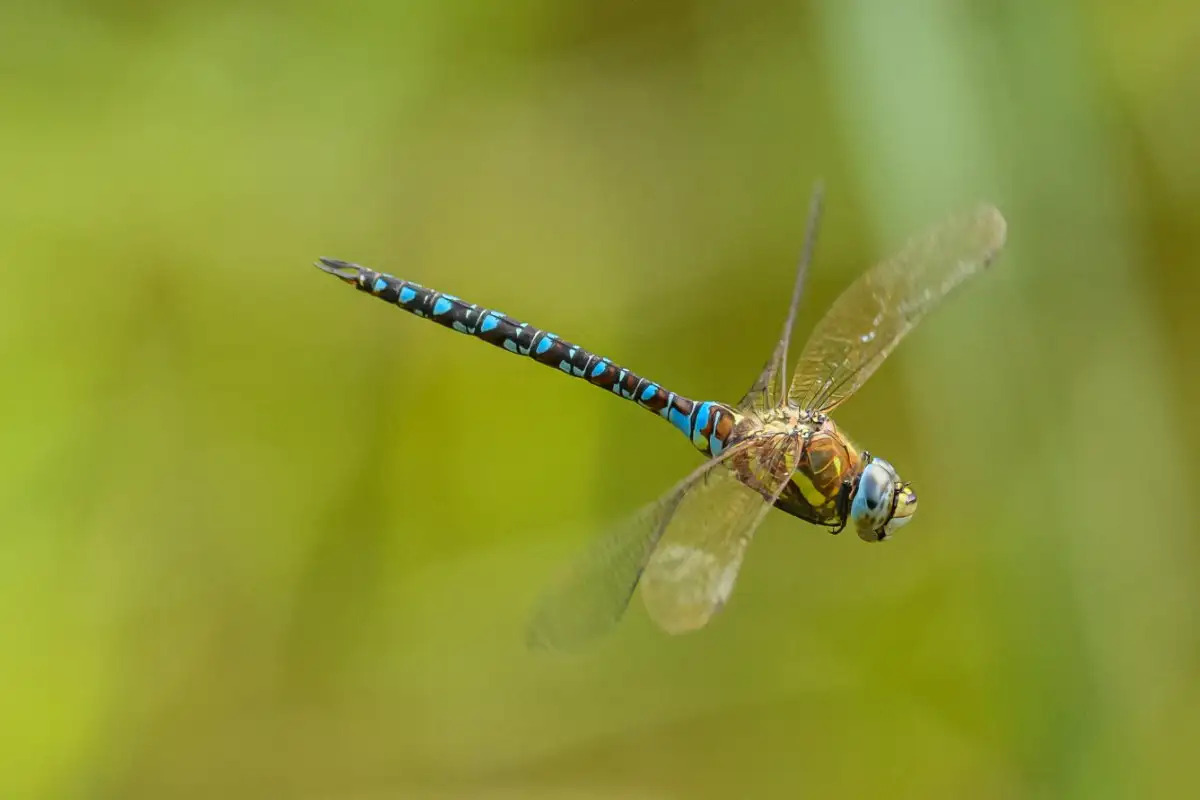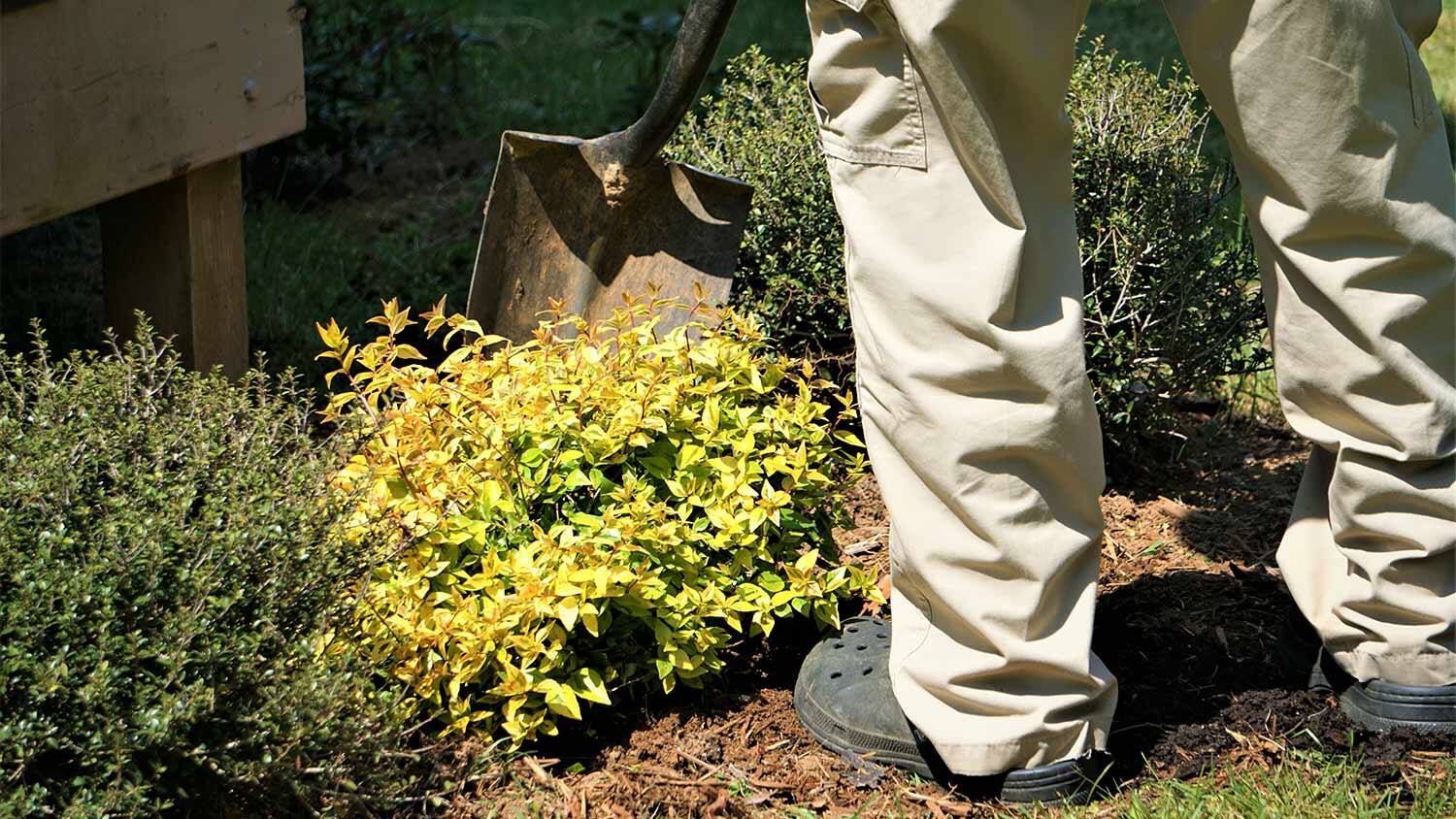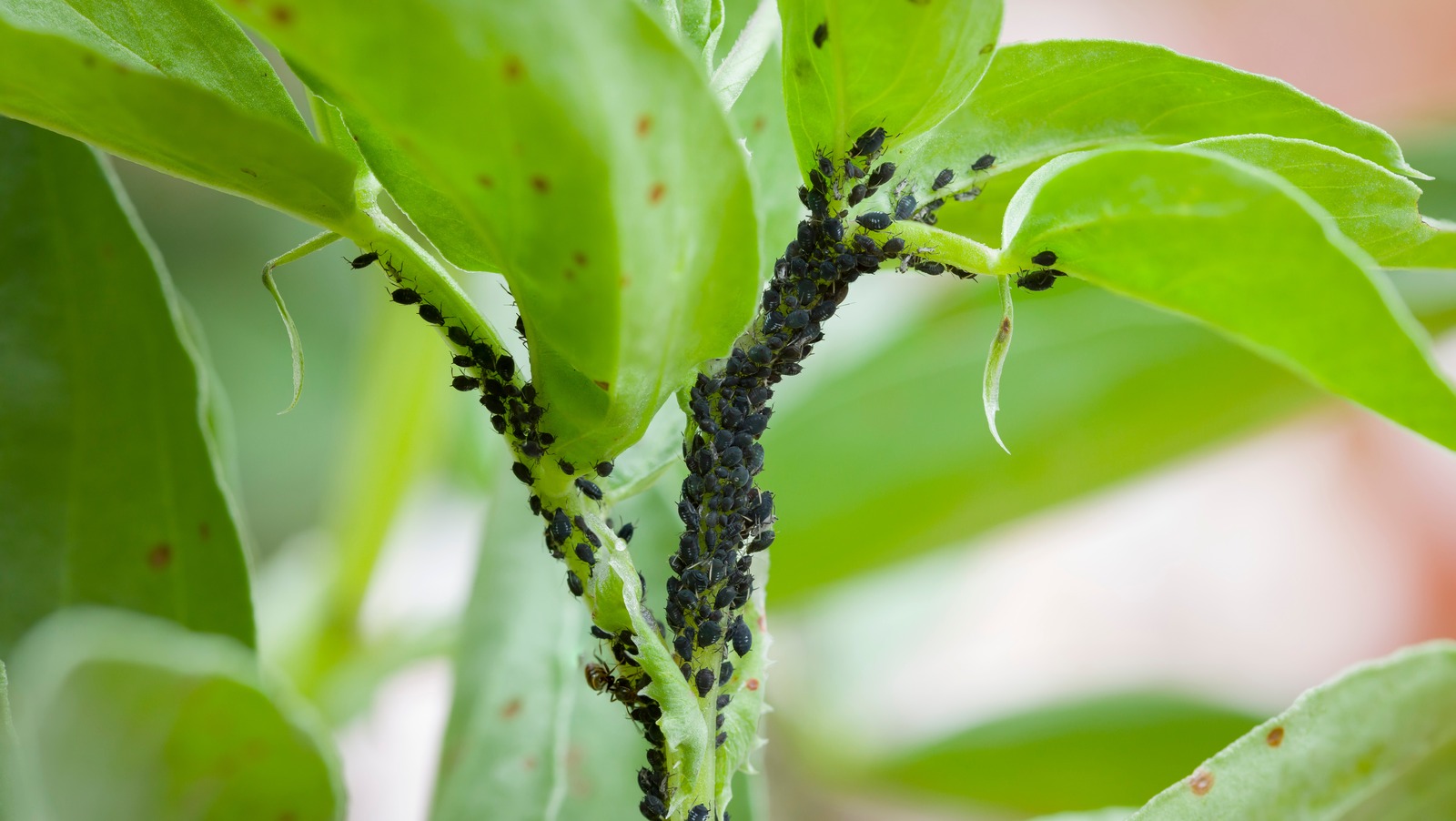Home>Gardening Tips and Tricks>Problem Solving>How To Get Rid Of Flying Insects In The House
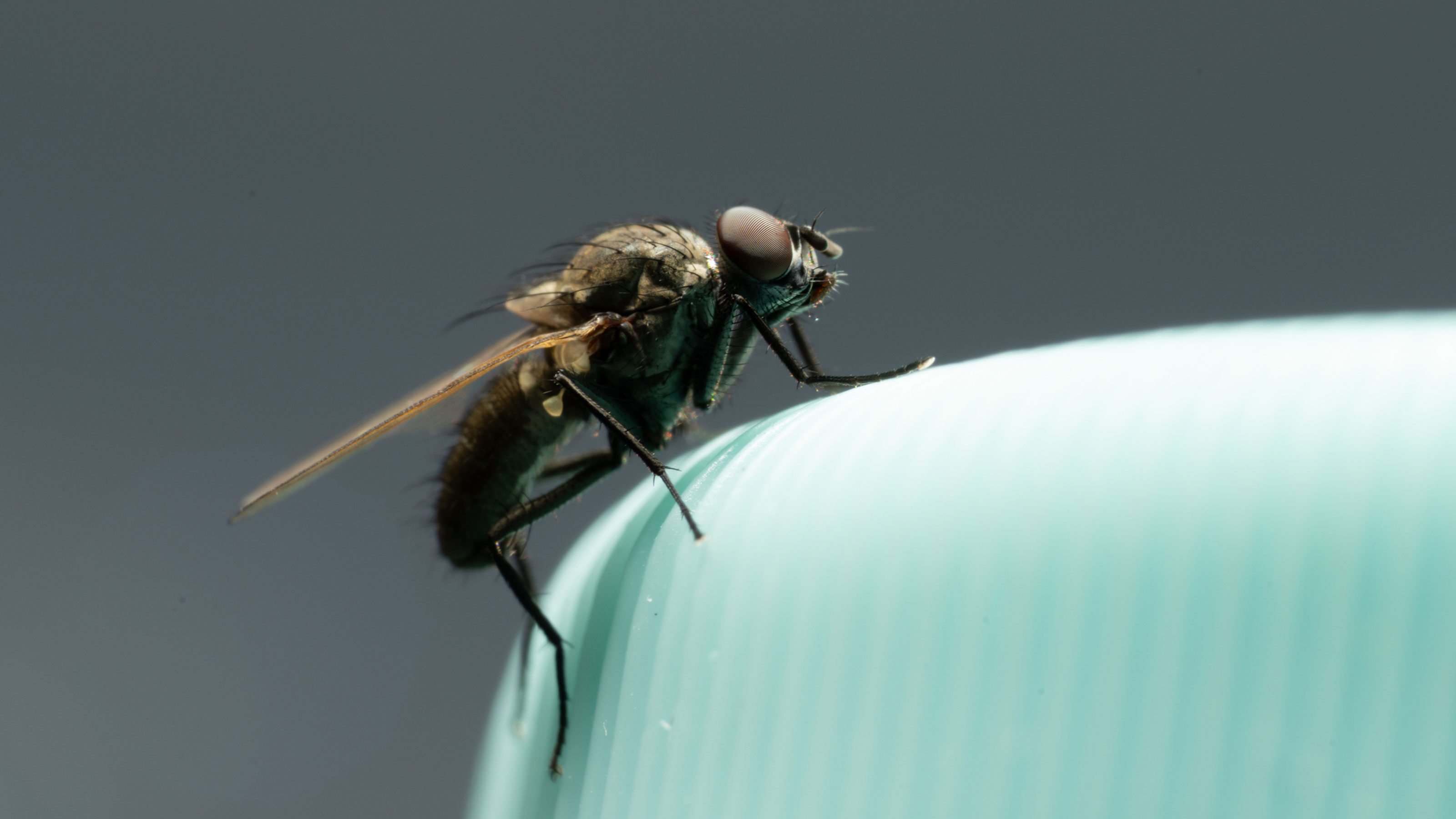

Problem Solving
How To Get Rid Of Flying Insects In The House
Modified: January 22, 2024
Learn effective problem-solving techniques to eliminate flying insects in your house. Discover helpful tips and strategies to get rid of these pesky pests for good.
(Many of the links in this article redirect to a specific reviewed product. Your purchase of these products through affiliate links helps to generate commission for Chicagolandgardening.com, at no extra cost. Learn more)
Table of Contents
Introduction
Flying insects can be a nuisance in the house, disrupting our peaceful living environment and causing discomfort. They can also pose health risks by spreading diseases and contaminating our food. Whether it’s flies, mosquitoes, gnats, or other flying pests, it’s important to address the issue and find effective ways to get rid of them.
In this article, we will explore common types of flying insects that can invade our homes, provide tips on identifying the source of infestations, and offer preventive measures to keep them at bay. Additionally, we will discuss natural remedies and chemical insecticides that can be used to eliminate flying insects. Finally, we will delve into the possibility of calling professional pest control for severe infestations.
By implementing the strategies and suggestions outlined in this article, you will be equipped with the knowledge to combat and prevent flying insect infestations in your home, ensuring a more comfortable and hygienic living environment for you and your family.
Common Types of Flying Insects
Before we dive into the methods of getting rid of flying insects in your house, it’s essential to familiarize yourself with the different types of pests you may encounter. Here are some of the most common flying insects that can infest your home:
- Flies: Flies are a ubiquitous nuisance, buzzing around our homes and landing on food. Common flies include house flies, fruit flies, and blowflies. They are attracted to rotting food, garbage, and other organic matter.
- Mosquitoes: Mosquitoes are known for their itchy bites and their ability to carry diseases such as malaria, dengue fever, and Zika virus. They breed in stagnant water, so it’s essential to eliminate any standing water sources around your property.
- Gnats: Gnats are tiny flying insects that are often found hovering around indoor plants or moist areas. Fungus gnats can be a common annoyance in homes with houseplants, as they lay their eggs in the moist soil.
- Moths: Moths can be both a nuisance and a threat to your wardrobe. Clothes moths feed on natural fibers like wool and silk, while pantry moths infest stored food items.
- Midges: Midges, also known as “no-see-ums,” are small, biting insects that can be a significant annoyance, especially in outdoor areas during the summer months.
Identifying the type of flying insect you’re dealing with can help you determine the most effective methods and treatments to eliminate them. Additionally, understanding their behavior and preferences will assist you in implementing preventive measures to keep them out of your home.
Identifying the Source of Infestation
When it comes to dealing with flying insect infestations, it’s crucial to identify the source of the problem. By understanding how and where the pests are entering your home, you can effectively target your efforts and prevent future invasions. Here are some steps to help you in this process:
- Check for entry points: Inspect your windows, doors, screens, and any other potential openings for gaps, cracks, or holes that flying insects can use to enter your home. Seal any openings to prevent further entry.
- Eliminate standing water: Many flying insects, such as mosquitoes and gnats, breed in standing water. Remove any stagnant water sources like birdbaths, clogged gutters, or water-filled containers to discourage their reproduction.
- Clean up food sources: Flying insects are attracted to food residues and spillages. Keep your kitchen and dining area clean by promptly wiping up spills and properly storing food in airtight containers.
- Inspect houseplants and flowers: Indoor plants can be a breeding ground for fungus gnats and other flying insects. Check the soil for signs of infestation and consider using sticky traps or natural remedies to control the problem.
- Look for nest or breeding sites: Some flying insects, like fruit flies, may be breeding in decaying fruits or vegetables. Dispose of any overripe or rotting produce and regularly clean your trash cans to eliminate potential breeding grounds.
- Monitor outdoor areas: If you’re experiencing an abundance of flying insects indoors, it’s essential to inspect the exterior of your house as well. Check for stagnant water, decaying organic matter, or areas of excessive moisture that may be attracting pests.
By taking these steps and identifying the source of the infestation, you will be better equipped to address the problem at its root. It’s important to remember that prevention is key to keeping flying insects out of your home in the long run.
Preventive Measures
Prevention is essential in keeping flying insects out of your home. By implementing these preventive measures, you can significantly reduce the chances of infestation:
- Install window screens: Ensure that all windows and doors have properly fitting screens to prevent flying insects from entering your home while still allowing for ventilation.
- Seal cracks and gaps: Use caulk or weatherstripping to seal any gaps or cracks in windows, doors, and other entry points to eliminate potential entryways for pests.
- Keep doors closed: Make a habit of keeping doors closed unless necessary, especially during dusk and dawn when flying insects are most active.
- Maintain cleanliness: Regularly clean your home, paying attention to areas where food is prepared or consumed. Wipe down countertops, sweep and mop floors, and promptly clean up any spills or messes.
- Proper food storage: Store food in airtight containers to prevent attracting flying insects. This applies not only to pantry staples but also to fruits and vegetables that can attract fruit flies.
- Proper waste management: Dispose of garbage and food waste in sealed bins to deter pests. Empty garbage cans regularly, clean them thoroughly, and keep them away from living areas.
- Trim vegetation: Keep shrubs, trees, and bushes trimmed and away from the exterior of your home. Overhanging branches can provide easy access for flying insects.
- Maintain proper drainage: Ensure that your gutters are clear and functional to prevent standing water, which can attract mosquitoes and other flying insects.
- Regularly inspect outdoor areas: Look for signs of infestation or breeding grounds in your outdoor spaces. Check for stagnant water, decaying organic matter, or areas of excessive moisture.
By incorporating these preventive measures into your routine, you can create an inhospitable environment for flying insects, reducing the likelihood of infestations and the need for extensive pest control measures.
Natural Ways to Get Rid of Flying Insects
If you prefer to use natural methods to eliminate flying insects in your home, there are several effective options available. Here are some natural remedies to consider:
- Flypaper or sticky traps: Hang flypaper or sticky traps in areas where flying insects are commonly found. These traps use a sticky substance to attract and catch the pests.
- Essential oils: Certain essential oils have insect-repellent properties. Citronella, lavender, peppermint, and eucalyptus oil are known to repel flying insects. Dilute a few drops of these oils in water and spray the mixture around your home.
- Vinegar traps: Create a vinegar trap by filling a bowl with apple cider vinegar or white vinegar and adding a few drops of dish soap. The scent of vinegar attracts flying insects, and the soap breaks the surface tension, causing them to drown in the mixture.
- Herb sachets: Place sachets filled with dried herbs like lavender, mint, or bay leaves in your closets and pantry to repel moths and other flying insects.
- Citrus fruit peels: The scent of citrus fruit peels, such as lemon or orange, can repel flying insects. Place the peels in areas where insects are commonly found.
- Homemade fruit fly trap: Create a fruit fly trap by placing a piece of ripe fruit in a jar and covering it with plastic wrap. Poke small holes in the plastic wrap and leave it out overnight. The fruit flies will be attracted to the scent and get trapped inside.
- Carnivorous plants: Consider adding carnivorous plants like the Venus flytrap or pitcher plants to your indoor plant collection. These plants naturally attract and trap flying insects.
- Keep a clean and dry environment: Flying insects are attracted to moisture, food residues, and decaying matter. Regularly clean your home, fix any leaks or damp areas, and remove any potential food sources.
Remember that natural remedies may require patience and consistency before you see significant results. It’s also important to note that these methods may not be as effective for severe infestations or certain types of flying insects.
By utilizing these natural methods, you can reduce the presence of flying insects in your home without the use of chemicals or pesticides. However, if the infestation persists or becomes overwhelming, it may be necessary to explore other options.
Chemical Insecticides for Flying Insects
If natural remedies have proven ineffective or if you’re dealing with a severe flying insect infestation, it may be necessary to resort to chemical insecticides. These products are specially formulated to kill and control flying insects. Here are some options to consider:
- Aerosol insecticides: Aerosol sprays are a popular choice for eliminating flying insects. They come in convenient spray cans and can be directly applied to the pests or sprayed in areas where they are commonly found.
- Residual insecticides: Residual insecticides create a barrier that remains active for an extended period, killing flying insects upon contact. These products are typically applied to surfaces where pests rest or land.
- Insecticide foggers: Foggers release a mist of insecticide, filling the air and reaching areas where flying insects may hide. This method is effective for treating large spaces or severe infestations but should be used with caution and according to the manufacturer’s instructions.
- Electric insect killers: Electric insect killers, also known as bug zappers, use ultraviolet light to attract flying insects and deliver a lethal electric shock upon contact. These devices are commonly used outdoors but can also be effective in some indoor settings.
- Automatic insecticide dispensers: These devices release small bursts of insecticide at regular intervals, providing continuous protection against flying insects. They are often used in commercial settings but can also be used in homes.
- Professional pest control services: If the infestation persists or if you prefer to leave it to the experts, contacting a professional pest control service is a viable option. They have the knowledge, experience, and access to more potent insecticides to effectively eliminate flying insects.
When using chemical insecticides, it is crucial to follow the instructions provided by the manufacturer carefully. Take necessary precautions to protect yourself, your family, and any pets from exposure. Additionally, be mindful of using chemical insecticides in areas with food preparation or consumption.
While chemical insecticides can be highly effective in eliminating flying insects, it’s important to consider them as a last resort and use them responsibly to minimize potential risks to humans, pets, and the environment.
Calling Professional Pest Control
If you’ve tried various methods and the flying insect infestation in your home persists or becomes overwhelming, it may be time to consider calling in professional pest control services. Here are some reasons why contacting professionals can be beneficial:
- Expertise and experience: Professional pest control technicians have the knowledge and experience to identify the type of flying insect infestation you’re dealing with and determine the most effective treatment methods.
- Tailored treatment plans: Pest control professionals can tailor treatment plans based on the severity and specific needs of your infestation. They will assess the extent of the problem, develop a targeted approach, and provide ongoing monitoring and maintenance if needed.
- Access to potent insecticides: Professional pest control companies have access to a wider range of potent insecticides that are not available to the general public. These products are more effective in eliminating flying insects and can be safely applied by trained technicians.
- Cost and time-effective: While professional pest control services may have associated costs, they can save you time and money in the long run. DIY methods may be time-consuming and require repeated treatments, whereas professionals can quickly and efficiently address the infestation.
- Address underlying causes: Pest control experts go beyond simply treating the existing infestation. They can help identify and address underlying causes such as structural issues, moisture problems, or food sources that may be attracting flying insects to your home.
- Peace of mind: Hiring professionals can provide peace of mind, knowing that you’re entrusting the problem to trained experts who will take the necessary steps to eliminate the infestation and prevent future occurrences.
When choosing a pest control company, it’s important to research and select a reputable and licensed provider. Look for companies with positive customer reviews, certifications, and a focus on environmentally-friendly practices.
Remember that professional pest control should be considered as a last resort for severe or persistent infestations. By combining professional expertise with preventive measures, you can create a long-term solution to keep your home free from flying insects.
Conclusion
Flying insects in the house can be a persistent annoyance, but with the right approach, you can effectively eliminate them and prevent future infestations. By understanding the common types of flying insects, identifying the source of the infestation, and implementing preventive measures, you can create an inhospitable environment for these pests.
Natural remedies such as flypaper, vinegar traps, and essential oils can be effective in getting rid of flying insects without resorting to chemicals. However, in some cases, chemical insecticides may be necessary, especially if the infestation is severe. When using chemical insecticides, it is essential to follow the instructions carefully and prioritize safety.
If your efforts are not yielding the desired results, don’t hesitate to reach out to professional pest control services. They have the expertise, experience, and access to effective treatments to address the infestation and provide ongoing monitoring to ensure long-term relief.
Remember, prevention is key when it comes to keeping flying insects at bay. By maintaining a clean and dry environment, sealing entry points, and eliminating food and water sources, you can significantly reduce the chances of an infestation occurring in the first place.
By combining these strategies and being proactive in your approach, you can reclaim your home from flying insects and enjoy a more comfortable and pest-free living environment.

